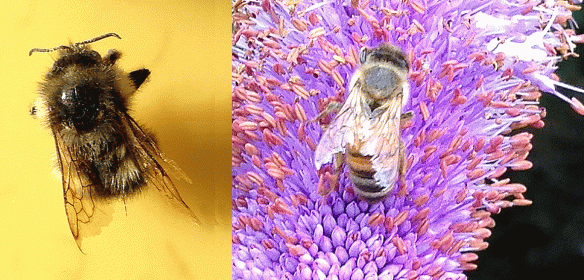Yesterday I went to the UBC Farm market to purchase their wonderful vegetables, herbs and flowers as I often do. Yesterday’s super treat was the Honey Extraction and sale by Jenny Ma of Vancouver Honeybees http://www.VANCOUVERHONEYBEES.com.
After the recent articles on pesticides and the dire problems with disappearing bees, it was so refreshing to experience something beautiful and joyful. Jenny uses “top bar hives” for her bees. She brought a demonstration hive for the participants to see; a hive which she actually made herself! She says the top bar hive is the least intrusive method of managing her charges. The bees form the wax comb themselves to the sizes that they naturally need, so the final honeycomb is more freeform in shape than the foundation-based Langstroth hives that are widely used in beekeeping. The bees have to work harder to make their own wax comb, but it is fantastic to see their own architectural creations.
It was great fun watching Jenny go through the extraction process and to bring home jars of honey and pollen still in the comb. The honey is so fragrant, it’s amazing!
“Golden, gilded, glad (2)” : last year, I posted a poem “Bees” by Poet Laureate, Carol Ann Duffy, from her book entitled “The Bees”. Couldn’t resist using her work again as title to this post. Here’s an extract of the poem:
Been deep, my poet bees,
in the parts of flowers,
in daffodil, thistle, rose, even
the golden lotus, so glide,
gilded, glad, golden, thus –
wise – and know of us:
how your scent pervades
my shadowed, busy heart,
and honey is art.


